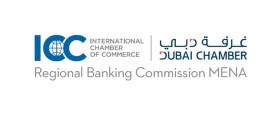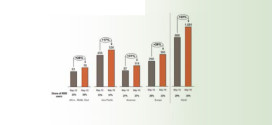The $58 trillion global asset-management industry faces rising headwinds and its growth has stalled, putting the industry’s attractive economics at risk, according to a report released by The Boston Consulting Group (BCG).
Entitled Capturing Growth in Adverse Times: Global Asset Management 2012, the report provides the findings of BCG’s tenth annual study of the worldwide asset-management industry.
Asset managers collectively failed in 2011 to attract significant flows of net new assets, the study found, as they have failed to do every year since the global financial crisis began in 2008. At the same time, the number of managers able to win those new assets contracted further. The result is an acceleration of a winner-takes-all trend that is redefining the industry landscape.
BCG’s research revealed more starkly than ever an industry in transition, competing internally and externally for an eroding share of the global pool of investor assets. “This is the new normal for investment managers, and for the foreseeable future it will define which business models and providers prosper and which ones fail,” concludes Dr Sven-Olaf Vathje, partner and managing director in BCG’s Abu Dhabi office.
“In the new ‘normal’, asset managers cannot stay the same,” he explained. “To grow, they need constantly to reassess their value proposition and the operating model required to deliver that proposition.”
While the industry remains profitable, having rebounded from its 2009 low, its operating margins were essentially flat in 2011 and have not recovered to levels achieved before the 2008 crisis, the report says.
Further, prices in some segments declined in 2011, exacerbating the longer-term revenue pressures resulting from a shift to lower-fee passive and fixed-income products.
“In the Middle East, asset managers benefit from the fact that penetration levels with managed products are still low,” explained Markus Massi, partner and managing director in BCG’s Dubai office. “Many asset managers have been able to partially offset margin compression with asset growth.”
The study draws upon more than 100 leading industry participants from 42 major markets, representing 48 per cent of global assets under management. It revealed wide regional variation in the growth of assets under management (AuM) in 2011.
Asia (excluding Japan and Australia) and Latin America grew the strongest, increasing AuM five per cent and 12 per cent respectively, on average. North America registered essentially no growth, while Europe gave up half the gain it made from 2007 to 2010. Japan and Australia declined three per cent and two per cent, respectively. The Middle East and South Africa expanded their AuM by a promising one per cent.
While difficult and turbulent times demand strategic reinvention, they also offer fresh opportunities, according to BCG’s study. In support of that thesis, the study identifies strategies that differentiate “emerging winners” from the rest of the pack. It also offers guidance to asset managers for differentiating themselves based on their market, segment, size, capabilities, and product choice.
“There are two business models best positioned to succeed going forward,” says Dr. Sven-Olaf Vathje. “One is the large, diversified asset manager with scale and expertise in multiple product, segment, and market/geography combinations. The second is the smaller manager highly focused on just one of those combinations and earning the right to win there. The second model is most promising in the Middle East.”
Supporting the winner-takes-all trend among investment managers is a shift in investor preferences away from traditional offerings. Actively managed core assets declined in 2011 in percentage terms, while passive, alternative, and specialty asset classes and solutions grew. The few providers that have successfully adapted to that market shift have benefited disproportionately. “But most regional asset managers have failed to respond and have not captured growth opportunities as a result,” said Massi.
To succeed, managers must address specific investor needs, including capital preservation, guaranteed-income features, and broader asset-class diversification, says the report.
The industry continues to confront a two-speed world, which constrains the growth potential of existing businesses based in slow-growth developed markets. AuM in developed markets has declined by one per cent yearly since 2007, while AuM in developing markets has experienced a compound annual growth rate of seven per cent.
“Asset managers in the Middle East should stop copying Western fund themes, but focus on investment topics that are relevant for Middle East investors,” said Massi. “They must stand up to this challenge to gain relevance.”
 Cash And Trade Magazine For Cash and Trade professionals in the Middle East
Cash And Trade Magazine For Cash and Trade professionals in the Middle East




